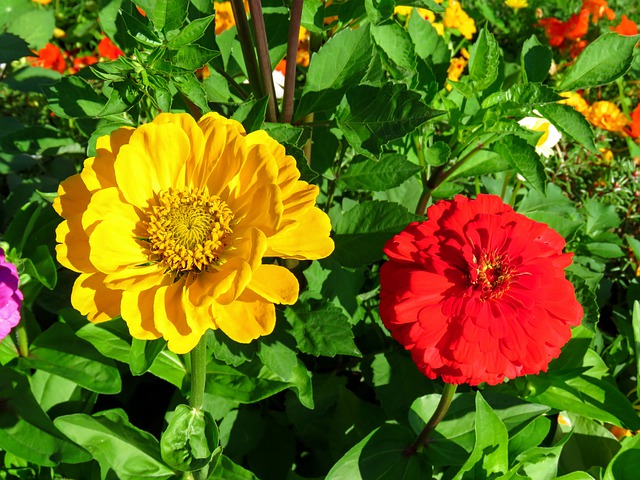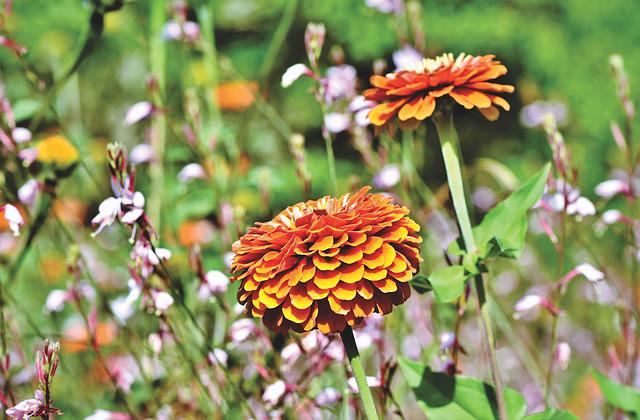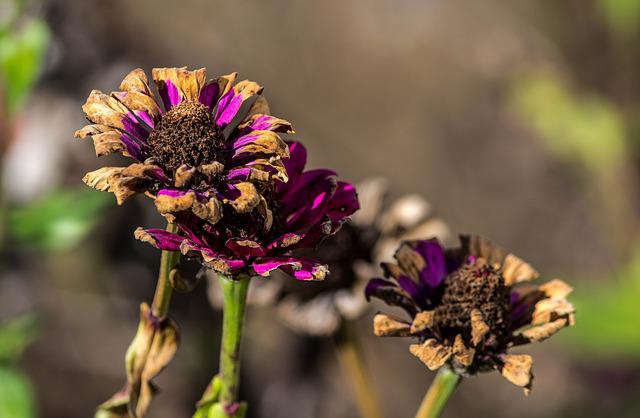When to Harvest Zinnia Seeds? Know What Zinnia Seeds Looks Like When Harvesting

Zinnia seeds are typically harvested when the flower petals have turned yellow or brown and start to fall off. This is usually around week 3 or 4 of growth but can vary depending on the variety. Once you’ve determined when to harvest your zinnias, head out to the garden and enjoy their vibrant colors in full bloom. If you find zinnia flowers that don’t have petals, don’t throw them away. They may still have a lot of seeds inside.
Table of Contents
What do Zinnia Seeds Looks Like?
The seeds of a zinnia resemble tiny spear points. In general, zinnia flower seeds are grayish, though some harvested at an earlier stage may be green. A zinnia flower’s petals and florets produce two distinct kinds of seeds. If you take the time to pull a zinnia petal off, you’ll be rewarded with a seed. The seeds of the florets no longer remain attached to the pollen florets, but this was not always the case. The petals of a zinnia flower may still have some of the plant’s seeds attached to them. The ray florets, the flowers’ petals, develop into seeds at their bases. You must first remove each petal to get to the oddly shaped seeds inside a dried zinnia flower.
Seeds from zinnias that produce florets tend to be genetic carbon copies of their parents. There’s a lot of room for variation and hybridization between the two parent zinnias because the seeds from the petals have different appearances. It’s possible to recombine the genes in zinnia petal seeds, which can lead to some unexpected outcomes. In zinnias, recombination splits apart the DNA so that each offspring can inherit a unique set of characteristics from its mother and father.
Easy Ways to Harvest and Save Zinnia Seeds
Step 1: Cut Off Your Zinnia Blooms When They Start To Wilt
Whether you put zinnias in a ground-level pollinator garden, flower beds, or a raised-bed kitchen garden, they bloom a lot from summer until the first frost.
When you see that blooms are starting to wilt or look like their time in the garden is ending, cut the stems below the blooms with a clean pair of pruners. If the blooms are in a container, snip off the stems above the soil line.
Step 2: Allow the Zinnia Flowers To Dry
Hang your flowers upside down for approximately one month or until completely dehydrated. You do not want to leave any moisture behind when storing them or risk mold growth.

Step 3: Collect The Seeds After They’ve Fell Off The Blooms
Once you’ve harvested your zinnias, it’s time to collect their seeds! To do this:
- Use a gentle pressing motion to extract as many seeds from each blossom as possible.
- Be careful not to damage them while extracting them.
- If the flowers are in a container, use a spoon to scoop out the seeds and place them in an open dish or on a paper towel.
Step 4: Store The Seeds In A Cool, Dry Place
Once you’ve collected your zinnia seeds, it’s important to store them properly, so they don’t lose their viability. To do this, put the seeds in an airtight container or sealable bag and refrigerate them for up to three months. You can also freeze them for up to six months.
When to harvest zinnia seeds is very important for the success of your garden. By following these simple steps, you can ensure you get the most out of your zinnias!

Examining Zinnia Seeds
Want to know if your seeds will grow? Even if you don’t want to grow zinnias right now, you can still check to see if some seeds will grow. Take some seeds to test grow and follow the growth conditions:
- The best temperature for zinnia seeds to grow is between 80-85°F (27-29°C).
- Zinnia seeds can sprout in 3 to 5 days at the best temperature. At lower temperatures (in the 70°F or 21°C), it takes between 5 and 10 days.
- If it’s time to plant seeds, you can plant your test seeds that have grown roots. Once the seedling has a few leaves, you can transplant it into soil or water.
